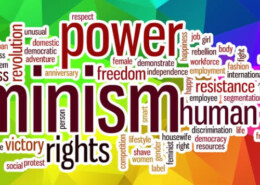What steps have the Indian Armed Forces taken towards gender equality, and what more needs to be done to achieve true equality?
Technology and social media have significantly influenced women's roles in the workplace and their representation in leadership positions. Increased Visibility: Social media platforms like LinkedIn and Twitter offer women a stage to highlight their skills, accomplishments, and professional journeys.Read more
Technology and social media have significantly influenced women’s roles in the workplace and their representation in leadership positions.
- Increased Visibility: Social media platforms like LinkedIn and Twitter offer women a stage to highlight their skills, accomplishments, and professional journeys. This increased visibility can lead to more career opportunities and greater recognition in their fields.
- Networking Opportunities: Technology facilitates global networking, allowing women to connect with mentors, peers, and industry leaders. This expanded network can provide valuable support, advice, and career advancement opportunities.
- Flexible Work Arrangements: Advances in technology have made remote work and flexible schedules more feasible. These arrangements help women manage work and personal responsibilities more effectively, making it easier to pursue leadership roles.
- Awareness and Advocacy: Social media has played a crucial role in raising awareness about gender inequality and harassment. Campaigns like #MeToo have led to greater advocacy for systemic changes and improved representation of women in leadership.
- Access to Resources: Online platforms offer a wealth of educational resources, training programs, and leadership development opportunities specifically tailored for women. These resources help women acquire the skills needed for leadership roles.
- Challenging Bias: Technology has exposed gender biases and stereotypes, prompting organizations to address these issues and promote more equitable practices.
Overall, while challenges remain, technology and social media have created more pathways for women to advance in their careers and achieve leadership positions.
See less

The Indian Armed Forces have made significant progress in achieving gender equality, but there is still room for improvement. *Milestones:* 1. 1992: Women inducted into Armed Forces as officers. 2. 2004: Women allowed in combat support roles. 3. 2015: Women allowed in combat roles in Indian Air ForcRead more
The Indian Armed Forces have made significant progress in achieving gender equality, but there is still room for improvement.
*Milestones:*
1. 1992: Women inducted into Armed Forces as officers.
2. 2004: Women allowed in combat support roles.
3. 2015: Women allowed in combat roles in Indian Air Force (IAF).
4. 2019: Women allowed in combat roles in Indian Army and Navy.
5. 2020: Supreme Court orders permanent commission for women officers.
*Current Status:*
1. Women comprise 3% of total armed forces personnel.
2. 1,500+ women officers serve in Army, Navy, and IAF.
3. Women serve in various roles: pilots, engineers, medical officers, and more.
*Challenges:*
1. Limited opportunities for women in combat roles.
2. Stereotypes and biases persist.
3. Limited representation in senior ranks.
4. Infrastructure and facilities for women personnel.
5. Societal attitudes and family pressures.
*Reforms and Initiatives:*
1. Increased recruitment of women.
2. Training programs for women officers.
3. Separate facilities and infrastructure.
4. Support systems for women personnel.
5. Review of promotion policies.
*International Comparison:*
1. India ranks 13th in women’s representation in armed forces (Global Gender Gap Report).
2. Countries like US, UK, and Canada have higher women’s representation.
*Way Forward:*
1. Increase women’s recruitment and retention.
2. Expand combat roles and opportunities.
3. Address stereotypes and biases.
4. Improve infrastructure and facilities.
5. Encourage women to join and stay in the armed forces.
See less